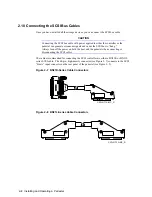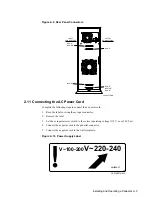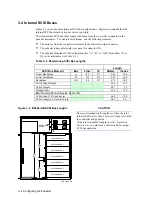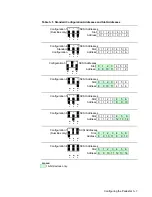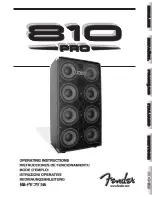
Glossary–1
Glossary
cold swap
A method of device replacement that requires that power be removed from all shelves in a
cabinet. Use this method when you cannot use warm swap or hot swap methods.
See also warm-swap and hot-swap.
controller
A hardware and software device that facilitates communications between a host and one or
more devices. A controller translates bus protocols and hardware interfaces and adds
functionality to the host/device communications.
daisy chain
A common method of connecting ac power or SCSI buses from the source through a shelf or
enclosure to another shelf or enclosure.
host computer
Commonly referred to as the host, this is the primary or controlling computer for the storage
subsystem.
hot swap
A method of device replacement whereby the complete system remains on line and active
during device removal and reinstallation. The device being removed or reinstalled is the only
device that cannot perform operations during this process.
See also cold-swap and warm-swap.
megabytes per second (MB/s)
See megatransfers per second.
megatransfers per second (MT/s)
The repetitive rate at which words of data are transferred across a bus. The number of
megabytes per second (MB/s) is determined the bus width (8-, 16-, or 32-bit). For example, a
5 MT/s transfer rate is the equivalent of:
Bus Width
8-bit
16-bit
32-bit
Word Size
1 Byte
2 Bytes
4 Bytes
5 MT/s =
5 MB/s
10 MB/s
20 MB/s
modular carrier
The plastic container in which storage devices or power supplies are mounted to form SBBs.
Modular carriers are available in both 3.5-inch and 5.25-inch form-factors.
pedestal
An enclosure, commonly referred to as a pedestal, that houses a StorageWorks shelf in a
vertical position. This pedestal contains the power supply and a cooling fan. The user
supplies the storage SBBs and an ac power cord. The SBB types and the SCSI controller
determine the number of devices, the SCSI buses supported, and the pedestal location.
Summary of Contents for BA346-K Series
Page 38: ......


